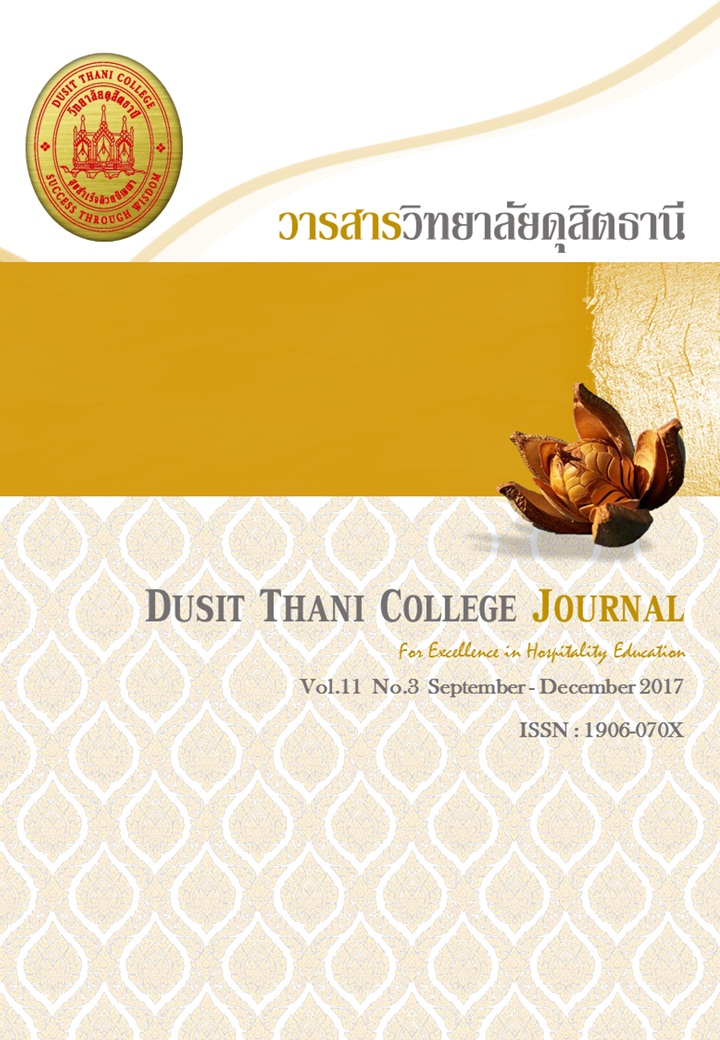The inheritance culture of Thai Chinese people in Doi Mae Salong, Chiang Rai
Main Article Content
Abstract
This research aimed to study the use of communication language and the inheritance culture of Thai-Chinese settlers in Doi Mae Salong, Chiang Rai province, located in the northern part of Thailand, adjacent to Myanmar for studying language and culture of Thai-Chinese descent on Doi Mae Salong, Chiang Rai, using 50 interviewees. The research found that there is only Yunnan Chinese in the household communication. The 86 percent used Mandarin and used Yunnan 14 percent. The language of daily life, they use Thai language and both of Chinese languages (Mandarin and Yunnan) in 88 percent. There is no formal language inheritance. At present, 64% of the population is promoting the young generation to get the knowledge of the Chinese language. They want to Inherit of language for new generation in the future.
Article Details
Article Screening Policy
- All research and academic articles to be published must be considered and screened by three peer reviews in the relevant field / article.
- All articles, texts, illustrations and tables published in the journal are the personal opinions of the authors. Editors don't always have to agree. And no responsibility whatsoever is the sole responsibility of the author.
- The articles to be published must never be published. Where did you first publish? And not in the consideration of other journals If the audit found that there has been a duplicate publication It is the sole responsibility of the author.
- Any article that the reader sees as being plagiarized or impersonated without reference. Or mislead the work of the author Please let the journal editor know it will be your greatest blessing.
References
Chiang Rai Provice. (2016). Retrieved from https://www.chiangrai.net/cpwp/? page_id=145.
Heroic Museum Board (2014). The Immigration History Museum.
Chantima Chanhom. (2010). Language and Culture. Retrieved from https://nuch087785
8629.blogspot.com.
Kriengsak Chareonwongsak. (2016). Culture the role of overseas Chinese people.
Retrieved from https://www.kriengsak.com/Chinese%20culture%20overseas.
Krissana Charoenwong. (2010). The Study of Chinese Immigrants (Division 93) in the
country's northern frontier district Thailand: Economic, Social and Political
Changes, Ethnic Group Research in Thailand, The Princess Maha Chakri
Sirindhorn Anthropology Centre Retrieved from
https://www.sac.or.th/databases/ethnicredb/research _detail.ph p?id=267.
Kritika Chupol.(2017). Language and society. Retrieved from it.dru.ac.th/e-
profiles/uploads/learns/learn175.doc.
Narasad Pisitpunpron. (2005). Encyclopedia of Ethnic Groups in Thailand: Hor. Bangkok:
Reserch Institute for Languages and Cultures of Asia, Mahidol University.
Mae Salong Agricultural Cooperative. (2015). Organic tea production. Retrieved from
https://oknation.nationtv.tv/mblog /entry.php? id=966394.
Patchanee Tangyuenyong and Suree Choonharuangdej (2009). Teaching Chinese
Language in Thailand: Higher Education. Bangkok: Chinese Studies Center,
Institute of Asian Studies Chulalongkorn University.
Siriworn Chayakashtarin. (2001).Love King Keep Thai Language : Youth Language
Development Project. Bangkok: Superviser Unit, Department of General Education.
Thai Chinese area. (2016). Thai-Chinese Chamber of Commerce. Retrieved from
https://www.thaicc.org/th/culture-178/culture/417-2010-09-20-06-31-43.html.
Ministry of Social Development and Human Security. (2014).The master plan for ethnic
development in Thailand 2015-2017.Princess Maha Chakri Sirindhorn
Anthropology Centre.
Yuan Fang. (2007). A Study on the Yunnese Chinese Dialects of Mae Salong
NorthernThailand, Xiamen University.


